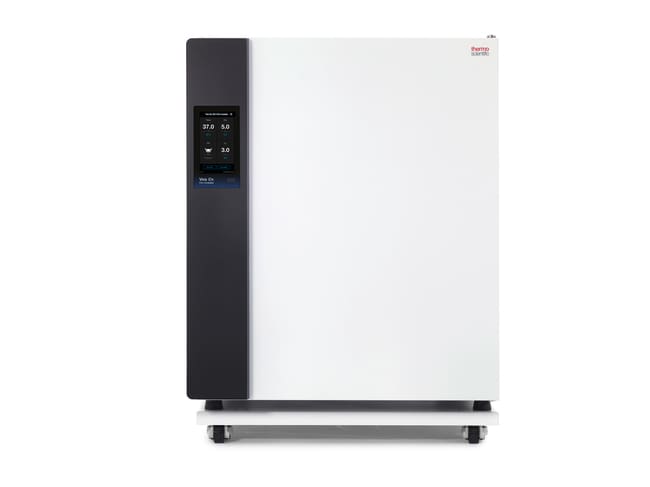Cubis II Ultra-High Resolution Balances: From Data Sheet to Reality
Introduction
The Cubis™ II Ultra-High Resolution Balances from Sartorius are precise analytical instruments used to weigh very small quantities of samples with high precision. The performance in a lab environment often deviates from instrument specifications due to varying environmental conditions and influences deriving from samples and users. The higher the resolution, the greater the relative measurement uncertainty is. Needless to say, these devices are particularly sensitive to imperfect laboratory conditions. Our goal was to build a balance which is less prone to environmental effects, resulting in faster weighing workflows yet improved specifications.
Aim: Prove excellent performance of the Cubis™ II HighCapacity Micro Balances under real-world lab conditions
Focus:
- Determination of the Minimum sample weight according to USP41 over the entire weighing range
- Elimination of electrostatic effects
- Performance under drafty conditions (e.g. in the fume hood)
- Compensation against air-pressure
Repeatability Test and Determination of Minimum Sample Weight According to USP Chapter 41

High-capacity micro balances are used to weigh small quantities of samples into larger flasks. For this reason it is important to understand how these balances meet the requirements for accucary and repeatability over the entire weighing range. By adopting the requirements for minimum weight it is ensured that samples are being weighed according to the acceptance criteria for accuracy.
Test Setup
Repeatability tests were performed to define the minimum sample weight according to USP Chapter 41 with a test weight of 1 g at varius preloads.
Results
Values between 2.6 mg and 2.9 mg were measured with Cubis™ II MCA66S through the entire weighing range (yellow bar, Figure 2). The deviation from zero preload (2.6 mg) is 12 % over the entire weighing range. The competitor balance showed rather larger deviation over the entire weighing range (black bar, Figure 2).
Conclusion
Cubis™ II MCA66S showed excellent repeatability and accuracy resulting in constant and low minimum sample weight values over the entire weighing range.
Features & Benefits:
- Top of the class minimum sample weight saves precious materials
- Robust performance through the entire weighing range guarantees high level of accuracy and repeatability
Electrostatic Effects
Electrostatically charged samples or containers can be difficult to weigh. Static charges, which can occur e.g. when using gloves, weighing powders or at low humidity, can cause unstable balance readings and measurement drift leading to slow and inaccurate weighing results.

Test Setup
The following samples: 10 mL beaker, 100 mL beaker and watch glass, were charged and then measured with a field mill. The charged samples were placed in the weighing chamber and the ionizer was activated. Once a stable value was shown, the sample was taken out and leftover charge was determined again.
In the case of Cubis™ II MCA66S the built-in ionizer was tested with a setting to activate the ionizer in combination with opening the door. Since this option was not available for the competitor balance, the ionizer started after the sample was put into the weighing chamber and the doors were closed. Additionally, both balances were tested against outer electro static fields. The electro static fields were induced by charged cellulose nitrate (CN) filters.
Results:
Table 1 shows that the ionization of the different charged samples always led to a complete discharge for the MCA66S. Scan the QR code on page 5 for more details.
| Vessel | MCA66S | Competitor |
|---|---|---|
| Beaker 10 mL | ✔ (full discharge) | ✖ (charge left) |
| Beaker 100 mL | ✔ (full discharge) | ✖ (charge left) |
| Watch Glass | ✔ (full discharge) | ✖ (charge left) |
Table 1: Comparison of ionization effectiveness between MCA66S and competitor balance.
The test against outer electrostatic fields showed that the Cubis™ II MCA66S is not affected. The maximum deviation in digits is shown in Table 2.
| Tested Balances | Max. deviation / digits |
|---|---|
| MCA66S | 0 |
| Competitor balance | 200 |
Table 2: Maximum deviation in digits due to outer electrostatic fields.
The optimal positioning of the four ionizing nozzles and the unique technological solution enables full discharge, even when inner draft-shield is installed. The variety of setting options offer the preferred activation of the ionizer. For example, when the ionizer starts during draft-shield opening, this helps to efficiently neutralize any electrostatic charges that may have accumulated on the sample or container, powder, not only ensuring accurate results but also stable readouts.
Additionally, the conductive coating of all glass parts (draft-shields) of the Cubis™ II MCA66S prevents from outer electrostatic effects.
Conclusion
Cubis™ II MCA66S has demonstrated exceptional performance in mitigating the effects of electrostatic charges by 100%. All tested vessels were fully discharged, and electrostatic charges were effectively neutralized.
In addition, the Cubis® II MCA66S is designed to be highly resistant to external electrostatic fields. This feature ensures that even in environments where significant electrostatic activity is present, the balance system remains unaffected, allowing for accurate and reliable weighing results to be obtained.
Features & Benefits:
- Full discharge thanks to the optimal position of the 4 ionizing nozzles and the flexible setting options guarantees accurate results
- Protected from outer static effects thanks to the conductive coating of the draft-shields results in stable values without drift
- No cross-contamination because full discharge is guaranteed

Drafty Conditions – Performance in Fume Hood
Working in drafty environments, such as a fume hood or weighing cabinet, can greatly impact both the weighing values and prolong measurement time. Weighing quality is affected because of the decline in repeatability and increase in measurement uncertainty.
The influence of the airflow strongly depends on the readability of the balance. For a balance with a readability of 1 microgram, draft can significantly influence the weighing results.

Test Setup
The standard deviation of the repeatability values and the measurement time were measured in a fume hood with an air-movement of 0.3 m/s to 0.4 m/s. Various laboratory vessels (vial, volumetric flask and weighing boat) were used as preload to simulate a workflow typical for high-capacity micro balances.
Please note, that the Cubis™ II MCA66S was tested with an automated inner draft shield as shown in Figure 5. The competitor balance had an inner draft shield installed.

Results
The achieved standard deviations are remarkably low under drafty conditions with 6 µg for the vial, 19 µg for the volumetric flask and 6 µg for the weighing boat (Figure 6).

The measurement times were comparable in both devices measured for the tested vial and volumetric flask. However, for the weighing boat the Cubis™ II MCA66S achieved faster results (Figure 7).

Conclusion
The Cubis™ II MCA66S showed excellent repeatability values with all three different types of vessels. The measurement time is comparable or slightly better in contrast to the tested competitor.
Features & Benefits:
- High degree of repeatability in fume hood contributes to good performance
- Fast measurement time speeds up processes
Air Pressure
A change in air pressure, e.g. because of the movement of atmospheric pressure areas, often results in deviations of the weighing result. The effect on the weighing result was here tested.
Test Setup:
Air pressure changes of 20 and 100 mbar were simulated, and the drift of the weighing value was measured.

Results
Figure 9 shows the air-pressure change test results for a change of 20 mbar and 100 mbar. The yellow bars show the results for the Cubis™ II MCA66S, nearly no difference of the weighing value was measured.

Conclusion
The Cubis™ II Ultra-High Resolution Balance MCA66S is highly resilient to changes in air pressure caused by weather changes and maintains its accuracy and precision.
Features & Benefits:
- Intelligent compensating system manages air-pressure ensuring stable results and undisturbed weighing workflows
Summary
Cubis™ II Ultra-High Resolution Balance MCA66S has proven to be the premium choice for customers seeking reliable measurement accuracy and precision. With its exceptional performance across the entire weighing range, it delivers impressive minimum sample weight results, regardless of the vessel or weight used for measurement. This is due to the next generation weighing system which ensures faster results and better specifications.
Static charges, one of the most often occurring problems, can be quickly and efficiently eliminated thanks to the novel de-ionizing technology. Protection from outer electrostatic influences is ensured due to specially coated draft shields. Moreover, this balance is designed to deliver good repeatability in drafty conditions, with fast measurement times.
Intelligent compensating systems manage the fluctuations of air-pressure and humidity which further supports stable balance behavior.
No matter what your weighing needs are, the Cubis™ II Ultra-High Resolution Balances from Sartorius are the optimal solution for unparalleled accuracy and precision.
Testing Conditions
Cubis™ II MCA66S balance was simultaneously and repetitively tested with a market-known comparable competitor model to allow direct comparison. In the laboratories there was no controlled temperature or humidity and other colleagues were occasionally entering for work on other devices.






